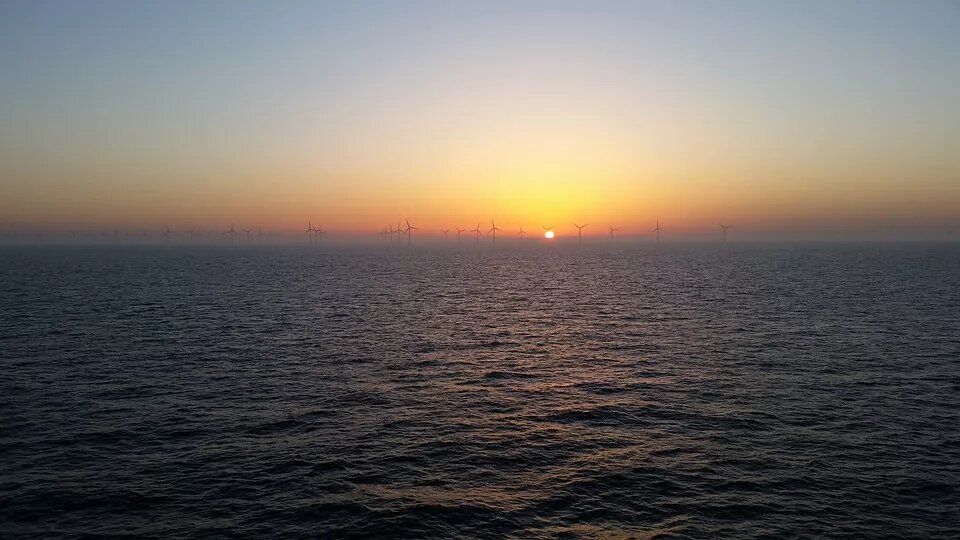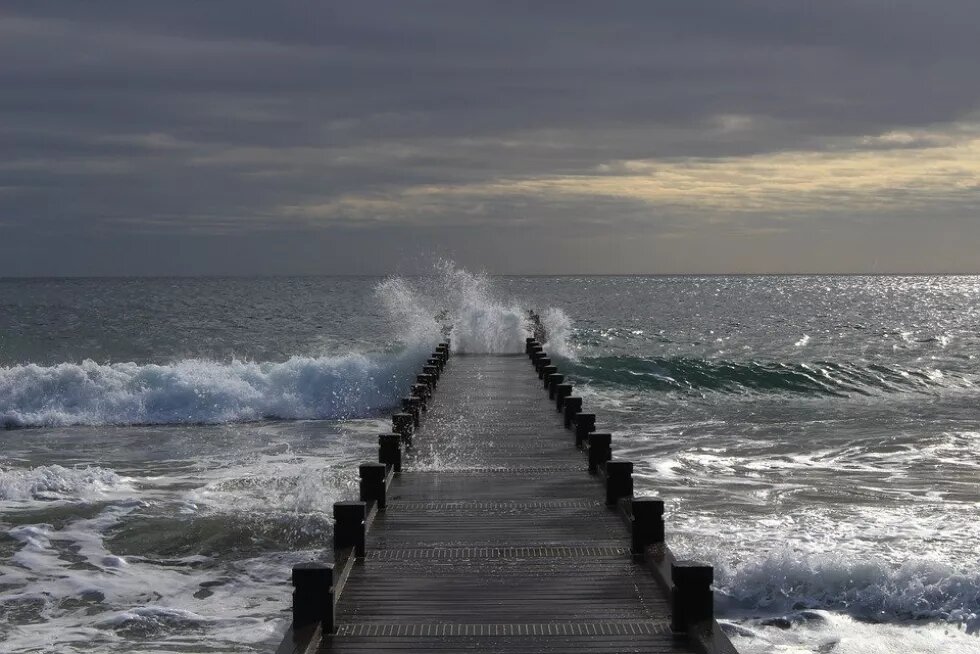
This article sheds light on the European Commission’s Energy Plan and its impact on local ecosystems, biodiversity and local communities.

Climate crisis is a threat to human survival. As its consequences become more severe, so does the danger for the vulnerable social groups to be left out. Therefore, it is imperative to build a new, timely strategy with sustainability as its key pillar to protect the planet, and, at the same time, to provide balanced development and equal opportunities without exclusions. At the end of 2019, Europe presented the European Green DealCommunication from the Commission to the European Parliament, the European Council, the Council, the European Economic and Social Committee and the Committee of the Regions, The European Green Deal, Brussels, 11.12.2019: https://eur-lex.europa.eu/resource.html?uri=cellar:b828d165-1c22-11ea-8…
Annex: https://eur-lex.europa.eu/resource.html?uri=cellar:b828d165-1c22-11ea-8… , aiming at no net emissions of greenhouse gases by 2050 and declaring that no person and no place will be left behind European Commission, A European Green Deal – Striving to be the first climate-neutral continent: https://ec.europa.eu/info/strategy/priorities-2019-2024/european-green-… .
Following the Green Deal, the European Commission has presented its energy plan Communication from the Commission to the European Parliament, the Council, the European Economic and Social Committee and the Committee of the Regions, An EU Strategy to harness the potential of offshore renewable energy for a climate neutral future, Brussels, 19.11.2020: https://ec.europa.eu/energy/sites/ener/files/offshore_renewable_energy_strategy.pdf. It proposes the increase of Europe's offshore wind capacity from its current level of 12 GW to 60 GW by 2030 and to 300 GW by 2050, adding 40 GW of ocean energy and other emerging technologies such as floating wind and solar energy facilities, by 2050 European Commission, Boosting Offshore Renewable Energy for a Climate Neutral Europe, Press Release, Brussels, 19.11.2020: https://ec.europa.eu/commission/presscorner/detail/en/ip_20_2096.
Given that in Greece some groups have already expressed an interest on relevant offshore investments, Γιώργος Φιντικάκης, Ανοίγει το παιχνίδι στα offshore αιολικά – Οι τέσσερις επενδυτές που εκφράζουν ήδη ενδιαφέρον, Energypress, 14.10.2020: https://energypress.gr/news/anoigei-paihnidi-sta-offshore-aiolika-oi-tesseris-ependytes-poy-ekfrazoyn-idi-endiaferon (George Findikakis, The game of offshore wind farms begins – The four investors that are already interested) it is significant to respect the ecosystems, so that the goal of a climate-neutral Europe will not have a negative impact on the conservation of terrestrial and marine biodiversity. The European Commission has set and published the relevant framework European Commission, Commission issues guidance on reconciling wind energy developments and nature, 19.11.2020: https://ec.europa.eu/environment/news/commission-issues-guidance-reconciling-wind-energy-developments-and-nature-2020-11-19_en that must be applied in Greece too, without any delay.
In Greece, the case of wind farms, mostly in mountain areas, caused public reactions. They were installed without the necessary discussions and, more importantly, without any substantial benefits for the areas where they were set. This experience showed that the holistic analysis of existing data is important for the energy transition to take place fairly by minimising the environmental impact on the one hand and energy poverty on the other, so that, practically, the citizens become part of the new energy reality and not mere observers.
Given the large coastline of our country, the offshore wind system and the utilisation of wave and tidal energy, wherever they are combined, require special attention and respect. Even if it is not set on land, in a field or grassland, the chain of ecosystems clearly affects the planet and its inhabitants as a whole, in perpetuity.
The scientifically proven optimal location is in any case a crucial issue. It is important to respect completely: a) the Natura sites European Environmental Agency, European Environment Information and Observation Network (Eionet), Natura 2000 – Greece, last modified 26.06.2020: https://www.eea.europa.eu/data-and-maps/figures/natura-2000-birds-and-habitat-directives-11/greece, b) the migratory flows and the routes followed by birds, fish and mammals in general, c) the areas where species of marine flora and fauna are nesting, and especially the endangered and endemic ones. At each stage of every possible project (design, construction, operation, maintenance, restoration and end-of-life recycling) it is clear that the sensitive areas must be excluded. These areas shall be defined as such by groups of scientists (biologists, ichthyologists, ornithologists, marine scientists, environmentalists), which the State will listen carefully.
The dramatic experience of the pandemic and the role of scientists in it should not be forgotten. The planet's current state would certainly be different if the scientists’ voices were heard on the threat of climatic crisis, starting back in 1896 with the Nobel Prize-winner Svante Arrhenius Svante Arrhenius, On the Influence of Carbonic Acid in the Air upon the Temperature of the Ground, Philosophical Magazine and Journal of Science, April 1896, Series 5, Vol. 41, pp. 237-276: https://www.rsc.org/images/Arrhenius1896_tcm18-173546.pdf, or, at least, if measures were taken even from the very first Report of the Intergovernmental Panel on Climate Change (IPCC), in 1990United Nations, The Intergovernmental Panel on Climate Change, Reports 1990-present: https://www.ipcc.ch/reports In Greece too, for more than 35 years, academic teachers and researchers, like Professor Yiannis Phillis, former Rector of the Technical University of Crete Γιάννης Α. Φίλης, Η Τελευταία Πνοή του Πλανήτη Γη, Εκδόσεις Μπουκουμάνη, 1984. (Yannis A. Phillis, The Last Gasp of Planet Earth, Boukoumanis Publications, 1984), Υannis A. Phillis, Time limits in the control of pollution systems, Journal of Theoretical Biology, 1981, Vol. 93, No. 3, pp. 541-546. , have focused their attention and published their work on the pollution's consequences and the dramatic climatic changes. They have also developed a practical mathematical model which can be used by decision-makers and politicians to measure the degree of sustainability of a country or an area and focus on the factors that affect it the most Sustainability Assessment by Fuzzy Evaluation (SAFE): www.sustainability.tuc.gr.
At the same time, the case of the environmental association National Audubon Society in USA is indicative. Having a scientific network since 1905, its work is dedicated to the protection of birds and ecosystems. In articles written by Audubon it is stressed that, due to climate crisis, 2/3 of the birds in North America National Audubon Society, Two-thirds of North American birds are at increasing risk of extinction from global temperature rise: https://www.audubon.org/climate/survivalbydegrees (that is where the Audubon operates) are at risk, stating at the same time that the organisation is agreeable to the utilisation of wind energy National Audubon Society, Wind Power and Birds – Properly sited wind power can help protect birds from climate change, 21.07.2020: https://www.audubon.org/news/wind-power-and-birds as long as a proper location is selected, as mentioned above. For their part, scientists analyse and suggest new ways of minimising the impact Roel May, Torgeir Nygård, Ulla Falkdalen, Jens Åström, Øyvind Hamre, Bård G. Stokke, Paint it black: Efficacy of increased wind turbine rotor blade visibility to reduce avian fatalities, Ecology and Evolution, August 2020, Vol. 10, Issue 16, pp. 8927-8935: https://onlinelibrary.wiley.com/doi/full/10.1002/ece3.6592, Sara P. Weaver, Cris D. Hein, Thomas R. Simpson, Jonah W. Evans, Ivan Castro-Arellano, Ultrasonic acoustic deterrents significantly reduce bat fatalities at wind turbines, Global Ecology and Conservation, 2020: https://doi.org/10.1016/j.gecco.2020.e01099, Molly Bennet, How New Technology Is Making Wind Farms Safer for Birds, Raptors and wind energy have a fraught history. Could these innovations allow them to co-exist?, Spring 2018: https://www.audubon.org/magazine/spring-2018/how-new-technology-making-wind-farms-safer-birds, Scott R. Loss, Tom Will, Peter P. Marra, Direct Mortality of Birds from Anthropogenic Causes, Annual Review of Ecology, Evolution, and Systematics, December 2015, Vol. 46, pp. 99-120: https://doi.org/10.1146/annurev-ecolsys-112414-054133, Langhamer, Olivia, Artificial Reef Effect in relation to Offshore Renewable Energy Conversion: State of the Art. The Scientific World Journal, 2012: https://www.hindawi.com/journals/tswj/2012/386713/ which is a necessary procedure before any political decision-making.
Furthermore, fishing, tourism, sea travelling, visual nuisances, noise, and electromagnetic fields are matters that can be predicted and dealtJ.K. Kaldellis, D. Apostolou, M. Kapsali, E. Kondili, Environmental and social footprint of offshore wind energy. Comparison with onshore counterpart, Renewable Energy, 2016, Volume 92, pp. 543-556, ISSN 0960-1481: https://doi.org/10.1016/j.renene.2016.02.018 Innovative activities of ecological tourism can be developed, leading to tourists’ attraction University of Rhode Island, Offshore wind farm increased tourism on Block Island, ScienceDaily, 06.05.2019: www.sciencedaily.com/releases/2019/05/190506150138.htm and creation of new ecosystems Nicole DiPaolo, A New Home for Fish: How Offshore Wind Turbines Create Artificial Reefs, National Wildlife Federation, 26.09.2019: https://blog.nwf.org/2019/09/a-new-home-for-fish-how-offshore-wind-turbines-create-artificial-reefs/, Maria Glarou, Martina Zrust, Jon C. Svendsen, Using Artificial-Reef Knowledge to Enhance the Ecological Function of Offshore Wind Turbine Foundations: Implications for Fish Abundance and Diversity, Journal of Marine Science and Engineering, 2020, 8(5), p. 332: https://doi.org/10.3390/jmse8050332. In any case, discussing with local communities and carrying scientific studies is truly necessary Vanja Westerberg, Jette Bredahl Jacobsen, Robert Lifran, The case for offshore wind farms, artificial reefs and sustainable tourism in the French mediterranean, Tourism Management, 2013, Vol. 34, pp. 172-183, The European MSP Platform (financed by the European Commission), Maritime Τourism (incl. local communities) and offshore wind: https://www.msp-platform.eu/sites/default/files/sector/pdf/1_tourism_offshore_wind.pdf.
There are notable examples from Europe which are worth studying in order to avoid mistakes or omissions and gain experience. The case of an offshore wind farm in Copenhagen is one of them. It is owned partly by the local utility and partly by the energy community “Middelgrundens Vindmøllelaug Official page of “Middelgrundens Vindmøllelaug”:www.middelgrunden.dk (Middelgrunden Wind Turbine Cooperative)” with 8,553 citizens from all over Denmark as members Jens H. M. Larsen, Hans Christian Soerensen, Erik Christiansen, Stefan Naef, Per Vølund. Experiences from Middelgrunden 40 MW Offshore Wind Farm, Copenhagen Offshore Wind, October 2005, pp. 26-28: https://energytransitionkorea.org/sites/default/files/2019-07/5.%20Copenhagen%20Offshore%20Middelgrunden.pdf and participation to the European Federation of Citizen Energy Cooperatives (REScoop Official page of the European federation of citizen energy cooperatives (REScoop): www.rescoop.eu). Citizens' active involvement is a guarantee of energy democracy, transparency, joint decision-making, energy poverty tackling and public awareness-raising Hans Chr Sørensen, Stefan Naef, Jens H. Larsen, The Middelgrunden Offshore Wind Farm, ISBN: 87-986690-3-6: https://base.socioeco.org/docs/a118_doc1.pdf. Such cooperation of energy communities with wider citizens’ participation, even at national/European level, could be examined in the case of Greece, in order to strengthen the idea while facilitating access to funding.
It is clear that whichever choice is made for energy production, the goal should be twofold: a) complete access to cheap electricity for everyone, so no one is left without meeting their energy needs, especially in times of crisis like the one experiencing nowadays and b) focus on the target for zero carbon footprint, primarily through resource and energy saving, by promoting the model of solidarity and modest prosperity, in opposition to the current egocentrism and reckless consumerism.
In addition, tackling Greece’s unemployment must be taken into account and, for that reason, incentives for domestic production of mild energy systems should be provided. The energy demands would be covered by utilising local resources and workforce, resulting products focused on domestic needs. In that way, the important field of cyclical, social and solidarity economy can be developed, a system that will respect the environment and operate after considering the sustainable life cycle analysis Schlör, H. & Hake, J.F., Sustainability Assessment Circle, Energy Procedia, 2015, 75, pp. 2641–2648: https://www.sciencedirect.com/science/article/pii/S1876610215011297.
'Protecting the natural environment, this common good, is a shared responsibility of all the inhabitants of the earth'
Ecumenical Patriarch Bartholomew
In conclusion, utilising the mild forms of energy, while respecting the environment and the human beings, can be an opportunity for real progress. But, in order for that to happen, everyone must understand –at the maximum extend– the importance of preserving the biodiversity without neglecting the needs of all people for decent living conditions. Leaving hydrocarbons behind can be an opportunity not only for the environment, which is already in desperate need, but for our social maturation too, at an international level. It could be achieved by easing tensions, as long as the principles of solidarity, coexistence and cooperation are promoted by the members of the neighbourhood, the village, the municipality, the region and beyond. In that way we could pass, as Makriyannis used to say, from “I” to “We” From the epilogue of Volume B: Στρατηγού Mακρυγιάννη Aπομνημονεύματα, Eλληνικά Γράμματα, 2006. (Memoirs of General Makriyannis, Ellinika Grammata, 2006), making a different revolution today, 200 years later... A “green revolution” because, as the Ecumenical Patriarch Bartholomew points out: ”Protecting the natural environment, this common good, is a shared responsibility of all the inhabitants of the earth” Ecumenical Patriarchate, Orthodoxy and Environment: https://ec-patr.org/category/eidika-themata-docs/perivallon-docs/, “The Green Patriarch”, Becket Films, 2009: https://www.youtube.com/watch?v=9SRztcw7XcQ (Documentary screened at the International Scientific Congress on Renewable Energy Sources at Mediterranean Architecture Centre, Chania, 02.09.2009).